Castles and Climbing
Well, we're headed into the last week of Language & Culture Session I; it's a Sunday night and I'm eating a baguette at my desk, already mourning the imminent loss of such ready access to such delicious bread. The students are just as sorry to go, but most understand that someday soon they'll be back. And won't they be proud to know their way on the metro, to have favorite cafés and pastry opinions and a well-remembered spot on the Quai de la Seine! A month is just long enough to really do most of what's on your bucket list anyway (and for many students, that included a trip yesterday to Disneyland Paris).
With today's blog, I'd like to spotlight last weekend's overnight trip to Tours, which was an all-around highlight, with two castle visits and a ropes-course outing. It was the longest stretch of time which our AM and PM students shared together, all 54 in the program mingling and making new friendships. I loved seeing different students connect by chance, diving deep into a conversation about language or politics and only remember five minutes in to introduce themselves. Other friendships deepened, with quality time on the bus, at dinner, and walking about town.
And then there were the CASTLES! Even I had no idea how awesome they'd be. My group spent the best part of our time on the parapets of Château de Chambord, the largest castle in the Loire Valley, constructed by King François I (contemporary of England's Henry VIII) in the Italian style. We looked out over the fields, imagining ourselves to be royalty with a sense of lightness and play so often lost by the teenage years. We picked out favorite bedrooms, exchanged taste in draperies, and lost ourselves in the winding stairs and hallways. It was a magical, medieval time.


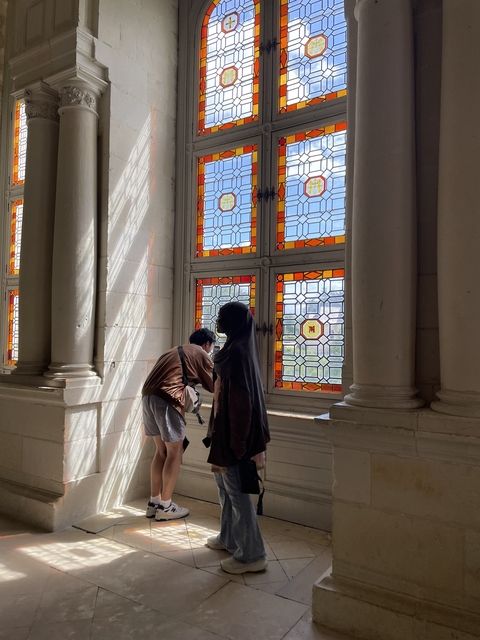
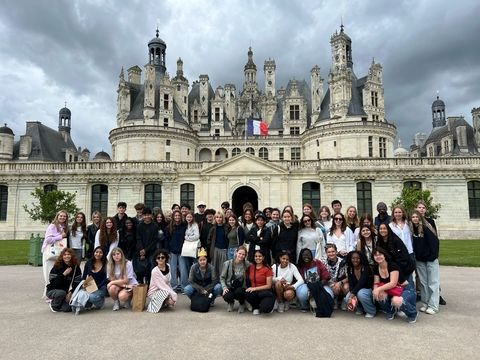
Then on Sunday morning came the ropes course. What an adventure! Students were eager to prove their skill on the hardest routes, but most mellowed out in the end, simply enjoying the lush green forest and the lightest of rains. A few got soaked going over the lake, or stuck in the middle of a difficult course, but in the end they laughed it off with their friends. It was a true show of resilience and risk-taking. I heard one student say to her friends, "Thank you for making me go on the hard course, because I never would have done it without you." I'll always remember this special morning--all of us high in the trees, seeing things from a new perspective. In a meaningful sense, when we got back on the bus to Paris, the kids had changed.
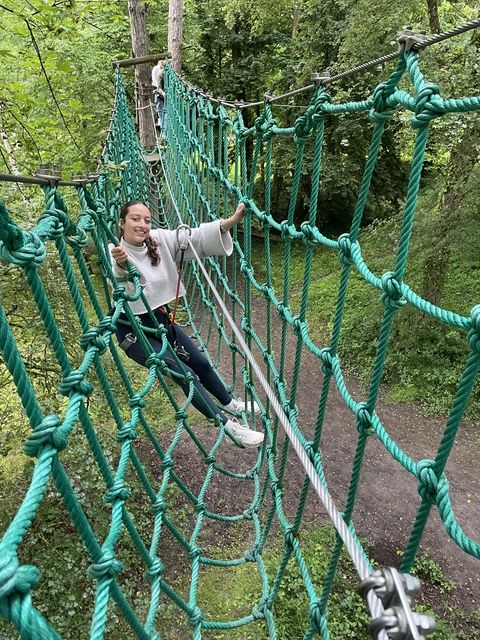
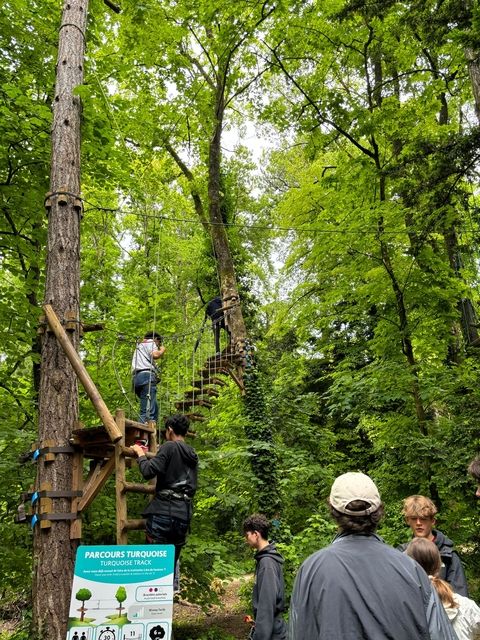

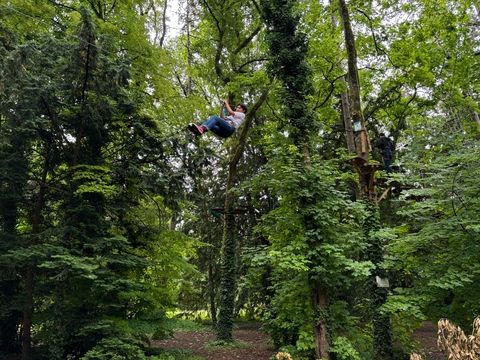
By Week 3, all our students have stepped beyond the basics, culturally and intellectually; mine are now delving into grounded, realistic conversations about French politics, drawing comparisons to the United States as both countries face important elections. What's amazing is that the students can have these conversations in French. As they practice their language skills, there's so much appreciation in real time for what they're getting out of this trip. I wonder what they'll say to families when they get home. How will they, after the fact, remember this time? What will stand out, and what will slip into unconscious memory?
Let me say what I mean--bear with me a bit. Near the end of his life, Sigmund Freud wrote a short essay called "The Mystic Writing-Pad", about a children's toy he'd noticed, consisting of a supple wax pad, thin vellum-like paper, and a clear plastic overlay, which together formed a kind of reusable journal. By writing on the plastic overlay, impressions are made onto the paper beneath which, picking up brown wax from the bottom layer, form a permanent record. These papers can be torn away and replaced with new ones for new notes. So the papers are fixed, and the plastic is fresh; but the wax pad beneath it all, Freud notes, is something in between, retaining some marks, some trace, of what was written on it before. Freud puts forward this pad as an analogy for the human brain. The top layer, he writes, corresponds to the faculties of the five senses; always taking in, always refreshing and ready for more. The middle layer is like our conscious memories, each one a unique record. But the bottom layer, the wax pad, is most interesting of all. With its illegible criss-cross of grooves, this is the developing mind.
When the students come home, they'll have stories to tell, "papers" to pass out that record their time here in Paris. And they'll have a new way of seeing things, a new readiness to make connections, and certainly a new fluency with French, that they and everyone around them will appreciate. But I wonder what will have changed that they won't notice. That which maybe in ten years, or twenty, they'll look back and realize began here, on this trip. Perhaps it will be one of the friendships, found for life. Or perhaps it'll be a new part of the self, just starting to be unearthed. I wish I could keep being their program leader, hanging around bearing witness until they find out. But the magic of teaching is just trusting the process.
It's been a marvelous month. We've still got time. Six days, six pain au chocolats... and space for a few more adventures in-between!
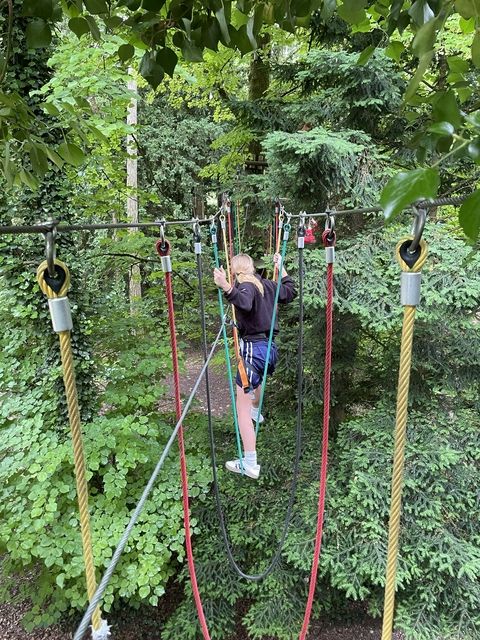
Related Posts
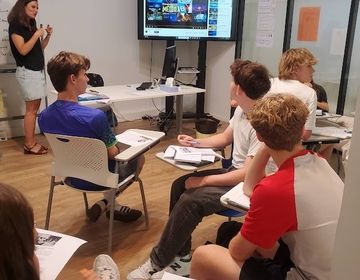
Classroom Experience: A Springboard to Proficiency Growth with CIEE
The Language and Culture Program with CIEE kicked off its second session on July 30, 2024. The overall goal of the program is for students to develop proficiency in the... keep reading
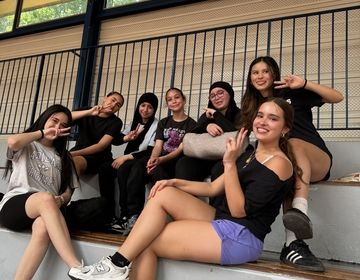
À Sarcelles with Olympic stars of our own !
Last week, our students hopped on the RER D train to venture out to Sarcelles, a small town in the northern suburbs of Paris. Our group entered a brightly-lit domed... keep reading
Playing Detective : Escape game in the Marais !
This past Thursday, our students took it to the bustling streets of the Marais to participate in an interactive escape game, called ClueZ. The Marais, or the “Marsh”, is a... keep reading
